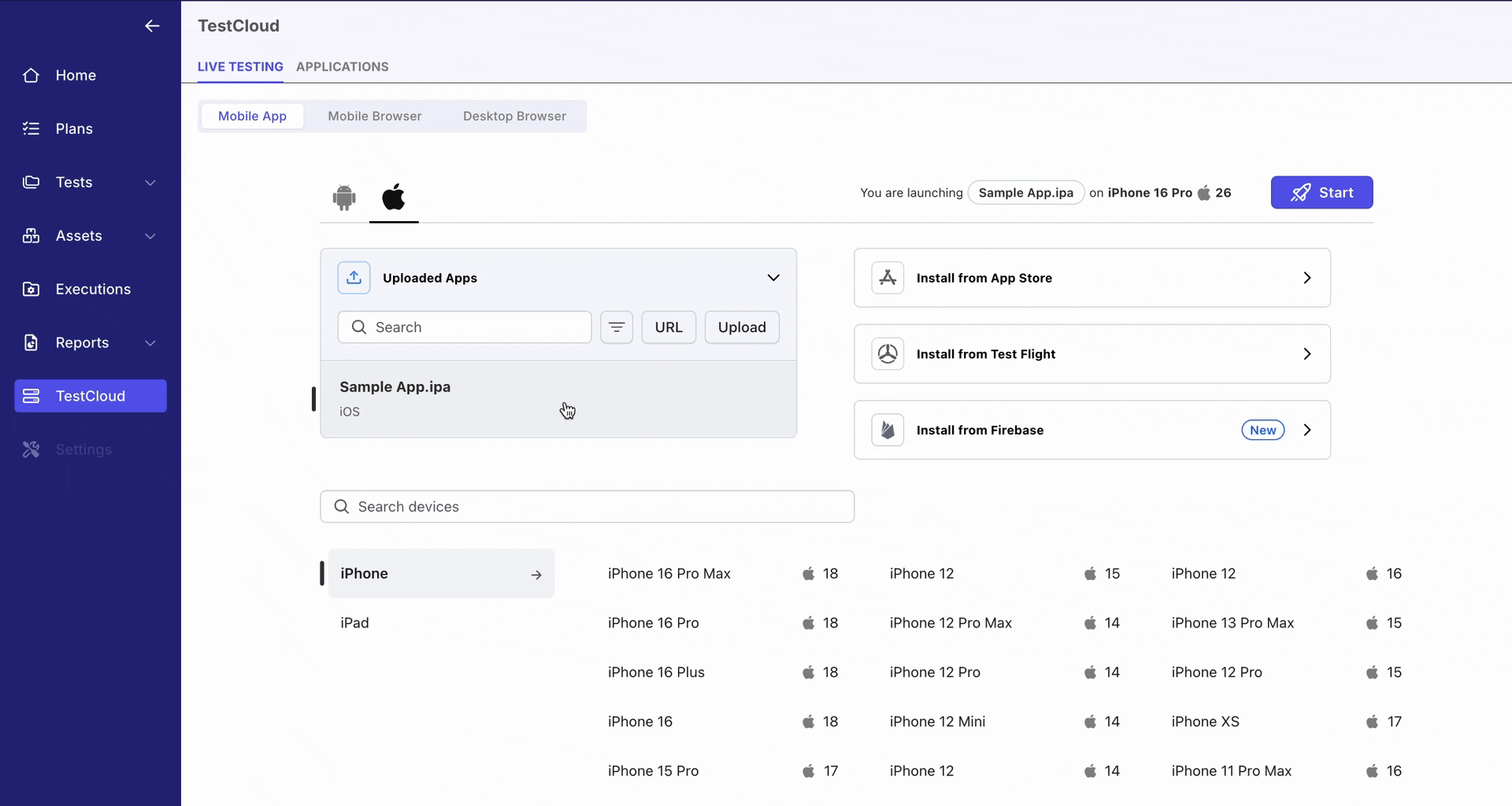Automated Regression Testing: Strategy, Tools & Best Practices
Learn with AI
As we discussed in our previous guide regression testing is crucial to any well-functioning CI/CD pipeline, but without automation, it takes up a lot of time and effort.
When you automate your regression tests to run on schedule, they constantly check your software for unintended side effects every time you make a change, which saves a lot of resources.
Let’s explore how automated regression testing can transform your software development process.
What is automated regression testing?

Automated regression testing is usually run after any new code enters the codebase, whether it’s a new feature, an enhancement, or a bug fix. Even small changes can unexpectedly affect other parts of the application, breaking existing functionality. To prevent this, teams need to verify the product’s behavior after every update. If issues slip through, they can surface during UAT or, worse, in production.
Manually retesting the entire system after each change is tedious, repetitive, and slow. In fast-moving agile environments, regression tests may need to run daily or even multiple times per day. To keep up, teams rely on automated tools that execute pre-written test cases with minimal human involvement.
Automated regression tests are designed to be run repeatedly across new builds. Running these tests multiple times ensures that every part of the application is validated and that existing functionality continues to work as intended.
In simple terms, it’s a safety net that maintains your software’s reliability by catching issues caused by new changes. This saves time, improves test coverage, and keeps the system stable.
Why automate regression testing?
- Faster feedback loops: Automated tests run immediately after code changes, catching issues early and reducing back-and-forth between developers and testers.
- Cost and time efficiency: Automation removes the repetitive burden of re-running tests manually, saving time and reducing long-term costs.
- Improved test coverage: Automated suites can run thousands of tests quickly, covering more scenarios, edge cases, and environments than manual testing.
- Consistency: Automated tests run the same way every time—no fatigue, no skipped steps—making results far more reliable.
Regression testing vs. retesting
- Regression testing checks whether recent code changes have affected existing features, while retesting verifies that a specific defect has been successfully fixed.
- Regression testing is broad, covering all related functionalities; retesting is narrow, focusing only on the failed test case.
- Regression tests are often automated and run frequently; retesting is usually manual and done after a bug fix.
Here's a brief comparison of regression testing vs retesting:
| Feature | Regression Testing | Retesting |
|---|---|---|
| Purpose | To catch unintended side effects | To confirm a specific bug is resolved |
| Scope | Broad: multiple areas of the app | Narrow: just the failed test case |
| Timing | After code changes or enhancements | After a bug has been fixed |
| Automation | Often automated via CI/CD | Often manual and focused |
| Dependency | Doesn’t depend on previous test failures | Always based on a failed test case |
How to automate regression tests?
Step 1: Know what you need to test
Focus on the parts of your app that break often or are mission-critical—like checkout flows in e-commerce. Use code coverage, bug history, and experience. Don’t test everything blindly.
Step 2: Pick the right regression test cases
Not all tests should be automated. Prioritize tests that are:
- Repetitive
- Stable
- High-impact
Examples: login flows, form submissions, backend calculations. Leave unpredictable or exploratory scenarios to humans.
To choose which test cases to automate, use a Test Case Selection Matrix — a scoring system that evaluates test cases based on five key factors:
- Run Frequency – how often the test is executed
- Stability – how consistently it behaves across builds
- Business Criticality – importance to users or revenue
- Reusability – shared logic with other tests
- Manual Effort – how painful or time-consuming it is manually
Here's how to use the matrix:
- List the factors you consider worth automating
- Score each factor from 0 to 1
- Sum the total (max = 5)
- Set a cutoff (e.g., 3.5+ = automate)
Use this during backlog grooming, test planning, or automation roadmap reviews to target high-value tests.
Example:
| Test Case | Run Freq | Stability | Business Critical | Reusable | Manual Effort | Score | Automate? |
|---|---|---|---|---|---|---|---|
| Login Flow | 1.0 | 1.0 | 1.0 | 1.0 | 1.0 | 5.0 | ✅ Yes |
| Newsletter Popup UI | 0.2 | 0.3 | 0.2 | 0.2 | 0.1 | 1.0 | ❌ No |
You can adjust weighting or scoring based on your team's priorities.
Step 3: Choose your tools
You have two paths:
- Build your own automation framework
- Use off-the-shelf tools (e.g., Katalon, Selenium)
Choose based on skills, timeline, and long-term strategy.
📝 Here's a curated list of the best automated regression testing tools
Step 4: Run your tests smartly
There are three common ways to run automated tests:
- Batch runs: Group tests by similarity.
- Scheduled runs: Run tests on a timer (e.g., nightly).
- CI/CD runs: Trigger tests automatically on each code change.
Choose where to run them: local machines, real devices, cloud platforms, or headless browsers. If you don’t have devices, use cloud testing services like Katalon TestCloud.
Best automated regression testing tools
Many automated regression testing tools help teams design test cases, execute them across environments, integrate with CI/CD pipelines, and generate detailed reports. With support for parallel execution, these platforms can dramatically reduce test time and improve overall efficiency.
Some widely used tools include:
- Katalon: A unified automation platform for web, API, mobile, and desktop testing. It offers low-code scripting, test management, analytics dashboards, and seamless CI/CD integration—ideal for teams wanting rapid automation without heavy framework development.
- Playwright: A modern end-to-end testing framework supporting Chromium, Firefox, WebKit, and mobile emulation. Known for speed, reliability, auto-waiting, and strong parallel execution—excellent for cross-browser regression testing.
- Cypress: A JavaScript-based testing tool designed for modern web apps. It runs in the browser, delivering fast execution and strong debugging. Perfect for frontend teams using React, Vue, or Angular.
- JUnit / NUnit: Widely used in Java and .NET ecosystems for backend regression suites, strong CI/CD integration, and parameterized testing.
- Postman: Useful not only for API exploration but also for automated API regression tests. Collections can run via CLI or CI pipelines for faster, more reliable API regression workflows.
- GitHub Actions / GitLab CI: While not testing tools themselves, they play a crucial role in orchestrating and scheduling regression test runs across environments. They ensure consistency by running tests automatically with every commit.
Best practices for automated regression testing
Now that we’ve walked through the essentials of automated regression testing, it’s worth reviewing a few best practices that will strengthen your test suite and keep it reliable over time.
- Update Regression Test Cases: Continuously refine and update your regression suite to reflect the latest changes in the application. Outdated tests lead to blind spots.
- Categorize Your Tests: Group regression tests based on application behavior or functionality. When a test fails, clear categorization helps pinpoint where the issue lies and speeds up investigation for the development team.
- Re-run Passed Test Cases: In an agile environment, even previously successful tests should be executed regularly to verify that new changes haven’t introduced unexpected side effects.
- Review Test Reports Carefully: Even with daily automated runs, make time to analyze reports thoroughly. This ensures that no minor defects slip through unnoticed.
Regression testing is a cornerstone of the software development lifecycle, and automation is essential to maximize its impact. With fast releases and growing user expectations, automated regression testing ensures quicker cycles and a higher-quality product.
Why Katalon for automated regression testing?

Katalon is one of the strongest platforms for automated regression testing because it brings creation, execution, analytics, and maintenance into one unified ecosystem. Instead of stitching together separate tools for web, mobile, API, and desktop testing, Katalon provides an end-to-end workflow designed to keep regression suites stable, scalable, and easy to maintain.
The platform fits both technical and non-technical roles. Testers can build tests codelessly, while engineers can extend logic with scripts. This flexibility helps teams accelerate automation without compromising control.
Why Katalon for automated regression testing
- Cross-platform coverage: Run regression tests across web UI, mobile, API, and desktop.
- Stable, maintainable objects: Built-in object management reduces flaky tests and locator issues.
- Run tests anywhere: Execute locally, remotely, or at scale using TestCloud’s 3,000+ environments.
- Parallel execution: Speed up regression cycles using Katalon Runtime Engine.
- CI/CD ready: Integrates with GitHub Actions, Jenkins, Azure DevOps, Bitbucket, and more.
- Faster debugging: Screenshots, logs, videos, and structured reports help analyze failures quickly.
AI-powered features that strengthen regression suites
- Self-healing locators: AI stabilizes tests when UI changes break selectors.
- TrueTest for AI-generated regression tests: TrueTest analyzes real production usage and automatically generates regression flows.
- AI analytics in TestOps: Identify flaky tests, hidden risks, and repeated failure patterns.
TestCloud: On-demand execution without infrastructure overhead

- 3,000+ real-world environments: Browsers, devices, OS combinations.
- Parallel execution: Reduce runtime for even large regression suites.
- Seamless workflow: Trigger cloud runs directly from Studio or TestOps.
Katalon provides one of the broadest and most scalable ecosystems for automated regression testing—ideal for teams that need fast execution, reliable maintenance, and full visibility across the testing lifecycle.
📝 Ready to see how Katalon powers regression testing at scale? Request a personalized demo.
|
FAQs on Automated regression testing
Why is it called regression testing?
It’s called regression testing because it checks for regressions, meaning it ensures new code changes don’t break existing features. It's like making sure you don’t accidentally go backward after fixing something or adding new functionality.
How to automate regression testing?
To automate, choose an automation tool like Selenium or Katalon Studio, and identify key test cases. Write automated scripts, integrate them into a CI/CD pipeline, and the tests will run automatically after each code update, ensuring the app stays bug-free.
How to reduce regression testing time?
You can reduce time by prioritizing critical test cases, running tests in parallel, automating repetitive tests, and removing redundant test cases. This helps streamline the process without sacrificing quality.
What is the difference between retesting and regression testing?
Retesting focuses on checking whether specific bug fixes worked, while regression testing checks that the new code didn’t break anything else in the system.
How long should regression testing take?
It depends on the project size, but it can take hours or days. Automation speeds up the process, ideally fitting into your development cycle without causing delays. The faster, the better!
What tools support AI-powered regression test selection?
AI-powered regression test selection is supported by tools like Mabl, AutonomIQ, and Katalon TrueTest. These tools use machine learning to prioritize and select the most relevant test cases based on code changes, historical data, or failure trends, reducing test execution time and focusing on high-impact areas.
Katalon TrueTest is an especially new way to do automated regression testing. It approaches regression testing by analyze real user behavior, then use AI to turn those real user insights into regression test suites. Read more about TrueTest here.
How often should I update my regression test suite?
You should update your regression test suite after every major feature release, bug fix, or refactor. Frequent updates ensure your tests reflect the current functionality of the application and help avoid false positives or missing coverage for new features.
What’s the difference between sanity tests and regression tests?
Sanity tests are quick checks to verify that a specific bug fix or change hasn’t broken core functionality, often run before deeper testing. Regression tests are broader, ensuring that recent code changes haven't negatively affected any existing features throughout the application.


